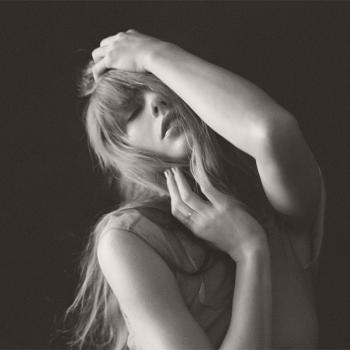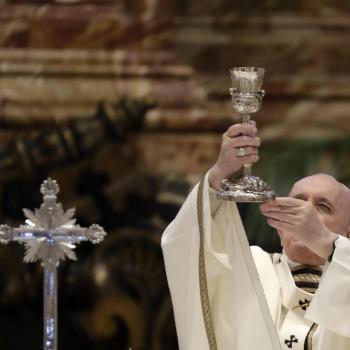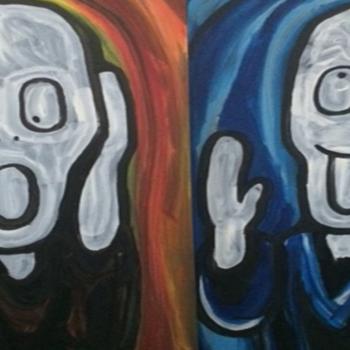In The Saint John's Bible, scientific images appear: fractals in the illumination of creation and strands of DNA amongst the branches of the menorah. Other cultures are represented: the silhouettes of humans for the sixth day suggesting aboriginal cave paintings. In the playful marginalia, the Buddhist mandala occurs repeatedly. For artistic director Donald Jackson, the mandalas "stand for the working of people's minds, trying to make sense of their experience" (Christopher Calderhead, Illuminating the Word: The Making of The Saint John's Bible).
Although Jackson has been quoted as creating a universalist image of God with the menorah, I doubt all members of the Bible's theological committee were as free spirited, as I doubt that the devoted monks who scribed and painted the illuminations of the Anglo-Irish scriptures were as syncretic as sometimes assumed. Missionizing Christianity in the British Isles reclaimed the symbols of animistic mindsets, remade them into the foreshadowing of another narrative: a conflicting plurality of gods was fulfilled as the Trinity, the sacredness of trees predicted the wood of Christ's cross.
The tension that I felt as I meditated on the menorah illumination in The Saint John's Bible becomes a welcome thing, an opportunity to ponder and affirm the visual designs of others with ways of thinking unlike mine. It is the Catholics who are recognized for producing illuminated scripture, a decade in creation, viable because of the high-level of commitment in communities formed by religious vows. I wish it were my own worship community — conservatives Christians who haven chosen Anglicanism, revering scripture but hungry for aesthetics in worship, confident that all truth is God's truth and ready to embrace all beauty as God's beauty.




